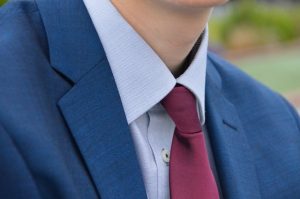If you are a financial advisor, what is that one thing which binds a client to you?
- A string of degrees and certifications?
- A plush office?
- Public speaking assignments?
- Vibrant social media presence?
- Investor Awareness Programs?
- Value added to their financial wellness?
Or is it something else? What is that one key ingredient, the magic wand leading to retention?
Some of you may already have guessed it.
That one magic ingredient is TRUST.
Personal branding for financial advisors helps in building that trust.
TRUST
From that very first interaction … to the time they sign up … to following your advice … to a lifelong association – the one thing that clients are struggling with is the question if they can trust you.
Inspiring trust takes a lot – testimonials, market reputation, value enhancement in portfolios. It is the challenge of a lifetime.
Yet, you would like a client to arrive at a decision in the first or second meeting.
WHAT DOES A CLIENT SEE IN A F2F WITH A FINANCIAL ADVISOR?
Well … your office, framed degrees and pictures hanging on the walls, polite and dedicated staff – everything is on display.
You are dressed in your formal best, speak with a clipped accent and spew all the financial jargon you learnt in those long, hard academic years.
Yet, it does not win the client’s trust.
Can you dress up or down to meet the client at his level every day? It is not easy, if you meet several people in a day.
What happens when a major part of your meetings are conducted on Zoom.
HOW TO INSPIRE TRUST WITH PERSONAL BRANDING?
It starts with your social media profiles, the articles that appear about you and the kind of references you generate.
Trust gets cemented in the one-to-one interactions with you. And how you present yourself makes a lot of difference…
Financial advisors need to add a few elements to their attire which inspire trust, whatever the outfit or level of formality they choose. Personal taste may vary, but one can try to stay close to these elements.
KEY ELEMENTS OF PERSONAL BRANDING FOR FINANCIAL ADVISORS
The five elements that define the style of the wearer are
- Line
- Shape
- Color
- Texture
- Pattern
1. LINE
Sharp vertical lines are formal. Horizontal lines indicate a leisurely, informal mood. What inspires trust are slightly curved lines.
Curves can appear in the form of shawl collars, rounded lapels, round buttons or rounded edges to pockets. Women can add princess cuts and high-but-rounded necklines to the list.


2. SHAPE
Shapes are the lines which enclose a space. In a garment, shape appears in the form of cut and style and embellishments. The rim of eye-glasses or outline of a shoe also spell a particular shape.
Here, styling needs to be comfortable and balanced. A man can opt for open buttons in a jacket to avoid a squared look. A woman can opt for peplums instead of body-hugging garments or wide flares.
3. COLOR
The colors which inspire trust are
- Neutrals like grey, black, navy, white, beige, olive
- Pastel shades like light blues, pinks, mauves, lemon, sea green or peach
Loud colors like red or orange which convey aggression are best avoided. They may be used in small proportions as an accent color in a necktie or scarf or pocket square. Red lips or nails on a woman are acceptable, if the rest of the outfit is not all red.
4. TEXTURE
Firm textures indicate formality and confidence. Soft, crushable fabrics make a person look dishevelled and disoriented.
Medium textures do the trick. Cotton, linen, silk, polyester blends all work well. A soft touch in the form of a silk tie or cravat or pocket square, a chiffon blouse or scarf worn by ladies makes one look more approachable.
5. PATTERN
Formal patterns widely seen in the world of finance are vertical/diagonal stripes. Some prefer solid colors and avoid patterns totally. Add patterns like gingham, paisley, pin-dots, medium plaid and wide stripes to outfits.
Avoid Mickey Mouse or clown prints or animal faces, which take away from professional credibility. The same applies to women’s garments, where designers go wild with cars, lipsticks, tigers or peacocks painted on sarees and scarves.
Outrageousness can define your personal style, but it distracts a client. Think why doctors and teachers wear neutral outfits.
This is from the perspective of looking more approachable, friendly and trustworthy.
PERSONAL STYLE IS A LOT MORE THAN PROFESSIONAL ATTIRE
Personal style is defined by many more factors such as lifestyle, body shape, personal color, temperament and taste.
Engage with an image consultant for personalized advice. Message at 7710008772 or mail at in**@mo********.com, stating your needs.